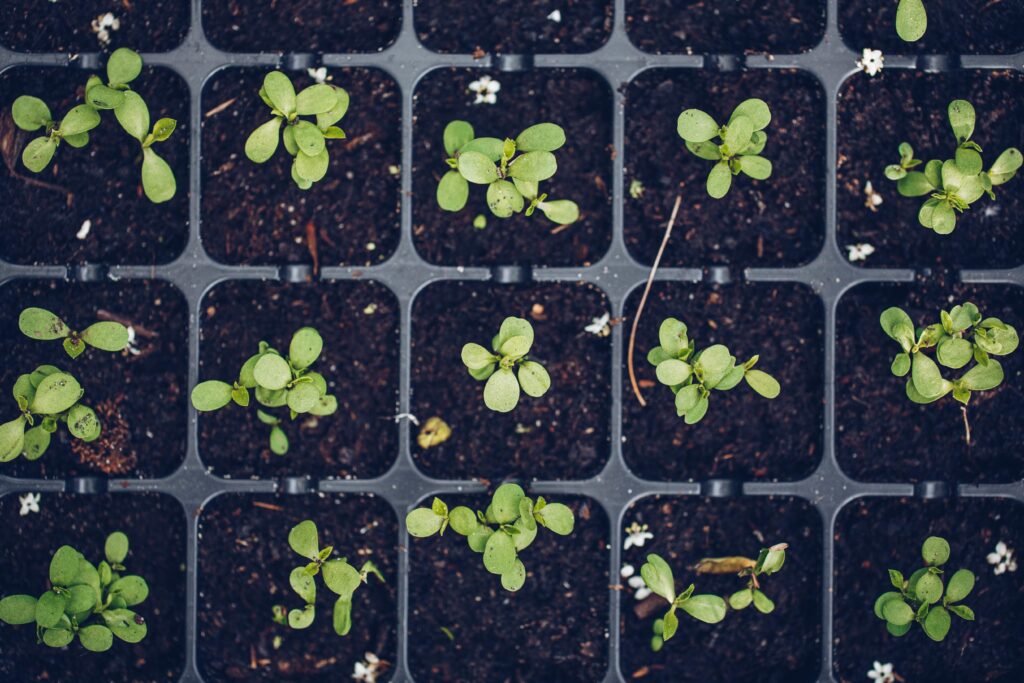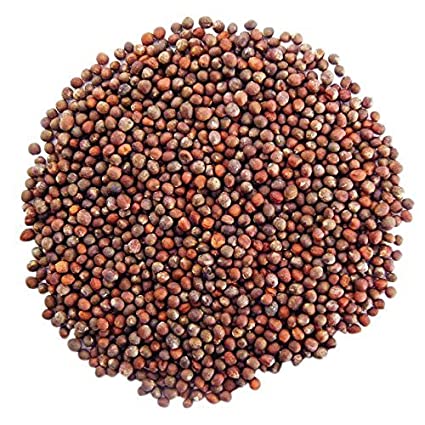
Whether you grow it for its flowers or to make sprouts, broccoli is a nutritious vegetable that can be grown in most regions and can be harvested more than once! If you want to find out how to grow broccoli sprouts in the right way, you are in the right place.
Broccoli sprouts have been found to contain sulphoraphane, a compound that has been extensively researched for its cancer-fighting properties, particularly in relation to breast cancer. It is recommended that individuals consume sulphoraphane regularly from a range of cruciferous vegetables, as it is a potent antioxidant that can support the immune system and reduce oxidative stress.
Best way to grow Broccoli Sprouts
Sprouted broccoli seeds are highly nutritious and easy to make! There are usually multiple propagation techniques you can choose from when it comes to plant propagation, but for broccoli, all you need are some seeds and a glass mason jar.
- Either make a sprouting lid (a lid with holes for water to pass through) for your jar or buy a sprouting jar made for the purpose.
- You can buy sprouting seeds online or at most health food stores. Make sure they are labeled specifically as sprouting seeds.
- For each batch of sprouts, use 1 – 2 tablespoons of seeds.
The sprouting process takes roughly 5 days from start to finish. Some people grow sprouts on a weekly basis.
- Soak your seeds in a bowlful of water for 12 hours. Place the bowl somewhere dark.
- After the soak, rinse the seeds off in cold water and then place them into your sprouting jar or container.
- Over the next 48 hours, you’ll need to rinse your seeds off at least 3 times per day. Make sure you let any excess moisture drain out so that your sprouts won’t begin to mold.
- By day 4 your seeds will have sprouted and it’s time to move them out of the dark. Don’t place them in direct sunlight, but rather indirect sunlight where they will begin to turn from yellow to green.
- By day 5 your sprouts should be ready to eat! Give them one final rinse beforehand.
- You can store your sprouts in an airtight container in the fridge for up to 5 days.
It’s generally safe to eat raw broccoli sprouts, but some health conditions may make it unsafe for some people. If you are concerned about whether it’s safe for you to eat raw sprouts then talk to your doctor.
- Broccoli sprouts have a mild spicy flavor.
- If you’re not sure how many sprouts to eat per day, start with a teaspoon and go from there. If you get gas or an upset stomach then reduce your intake.
- Don’t eat sprouts that have gone moldy. If this happens then discard them or use them as compost in your garden.
- Broccoli sprouts have small white hairs that look like mold, but they are a completely normal part of the sprout that helps them absorb moisture.
- You can buy pre-grown broccoli sprouts at grocery stores and supermarkets but they are much more expensive to buy this way.
Give it a read

How to Grow Broccoli From Seeds
Broccoli is one of the cruciferous vegetables along with radishes, kale, and brussel sprouts. It’s a cool-weather crop that is resistant to frost.
- Start your seeds indoors anywhere between 5 – 6 weeks before your local frost date and 2 weeks after. You can plant multiple batches to provide a harvest over an extended period in the fall.
- Harden your seedlings for 4 days before placing them outside to stay.
- Transplant your seedlings up to 4 weeks before the frost date.
- Plant your seedlings 0.5 inches deep. Space your plants 18 to 24 inches apart to give the leaves plenty of room.
- Space your rows 2 – 3 feet apart.

Watering & Sunlight
Broccoli needs to be kept moist in order to stay healthy.
- Keep the soil moist but not waterlogged. You can test the soil with your finger; if it’s dry then you need to water it.
- Waterlogged soil can breed diseases and stunt the growth of your plants. Don’t plant in an area that typically gets waterlogged.
- It’s best to plant broccoli in full sun or under small amounts of shade. Like many leafy vegetables, broccoli can bolt (grow seeds prematurely) if exposed to too much heat.
Harvesting
Depending on the variety, broccoli is ready for harvest in 80 to 150 days after germination. If your variety has a short growing season then you can stagger the planting times, allowing you to harvest broccoli over a period of a few months.
- A central spear will form on the top of the mature broccoli plant. It is ready for harvest when the numerous buds are completely formed but still tightly in bud.
- Cut the stalk about 5 inches down from the top of the flower. Both the buds and the stalk can be eaten.
- A new flower will grow to replace the original. It will not be as large as the first one but it is still edible.
- Broccoli leaves are also edible. They taste similar to cabbage.
How long does broccoli take to grow?
Broccoli comes in many varieties which give you options for growing time to maturity, head size, side shoots, and more.
- Dicicco: 70 to 80 days, heads 4 inches in diameter
- Packman: 60 to 80 days, both a central head and side shoots
- Green Comet: roughly 55 days, heads 6 to 7 inches across
- Waltham 29: 74 to 85 days, heads 5 to 6 inches across, no side shoots
- Spartan Early: roughly 58 days, heads 7 inches across
- Royal Cruiser: roughly 85 days, large side shoots
Companion Plants
- Celery, onions, beets, potatoes, and any herbs grow in harmony with broccoli.
Avoid planting strawberries, tomatoes, and green beans next to your broccoli.
Pests and Diseases
- Young broccoli plants are susceptible to cutworms. Place a cutworm collar (ex. a tin can with both ends removed) around the stems while the plants are still small.
- Remove cabbage worms by hand or spray them with an insecticidal soap.
- Cabbage maggots can be repelled by using a row cover or by planting radishes nearby as a companion plant.
- Common broccoli plant diseases include clubroot, yellows, and blackleg.
- Remove any infected plants from your garden immediately.
- Rotate broccoli and other cruciferous vegetables to different areas of your garden to prevent disease buildup in one area of the soil.
Support
If your broccoli plants are out in the open and exposed to wind, you should consider supporting them to prevent damage.
- You can pile up the dirt around the base of the plant.
- You can also place a stake next to the stalk to prevent bending. It’s best to place the stake before the plant grows large to avoid disturbing the root system.
- Don’t be tempted to plant vegetables next to an evergreen shelter belt for protection, since these trees drop acidic needles that inhibit the growth of other types of plants.
Frequently Asked Questions
The ideal pot size for broccoli is 8 inches in diameter. If you are doing multiple plants in the same container then space them 18 inches apart. Growing broccoli in pots allows you to move your plants into the shade on hotter than normal days.
Can I Grow Broccoli in Florida?
Yes you can! Since broccoli is a cool-weather plant, you should plant it in the winter or early spring to take advantage of the cool temperatures. The summer heat may cause the plants to bolt (form seeds prematurely)
How Do I Grow Broccoli Indoors?
Varieties like Waltham 29 and Dicicco are great for growing indoors! Broccoli only needs 6 – 8 hours of light per day and is fine at room temperature. Use a pot at least 8 inches in diameter with high-quality potting soil and keep the soil moist but not waterlogged.
How Do I Grow Chinese Broccoli?
Sow seeds 8 inches apart in rows 18 inches apart in full sun. Keep the soil moist but not waterlogged. Plants are ready to harvest about 60 to 70 days from germination. In warmer climates, you can plant multiple batches over the season to have both a summer and fall crop. Chinese broccoli is packed with important nutrients and all parts of the plant are edible!